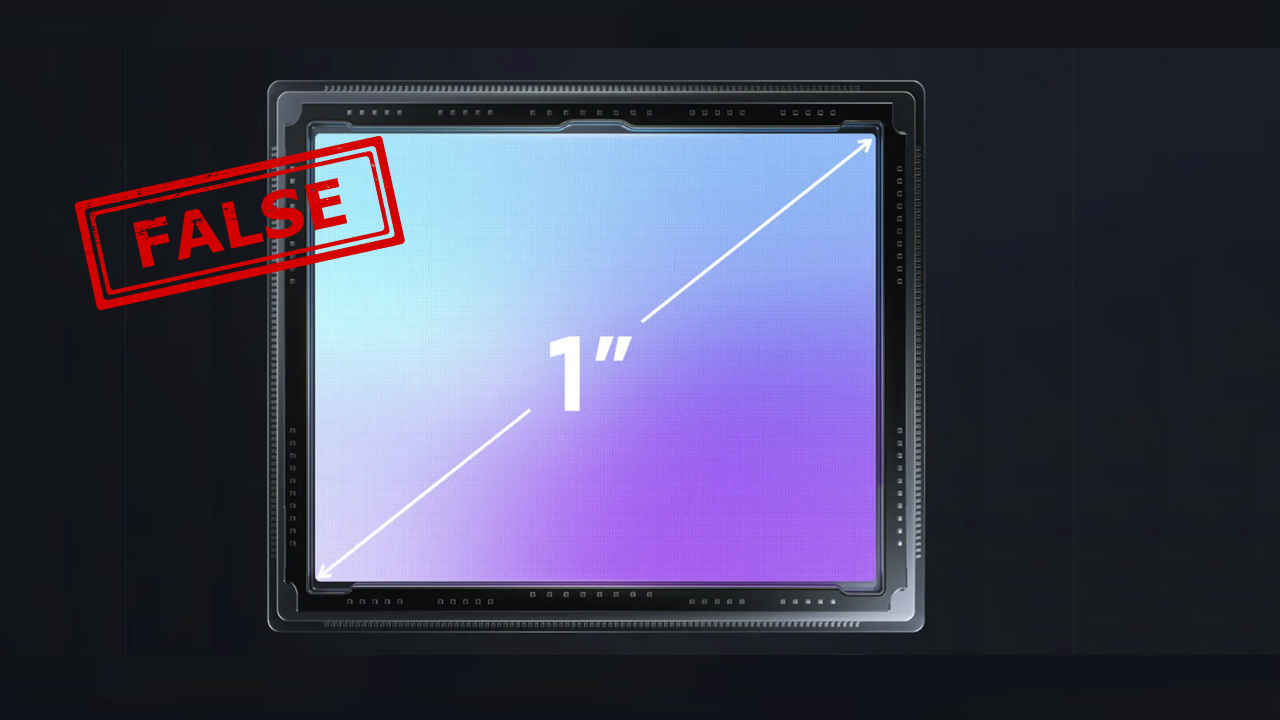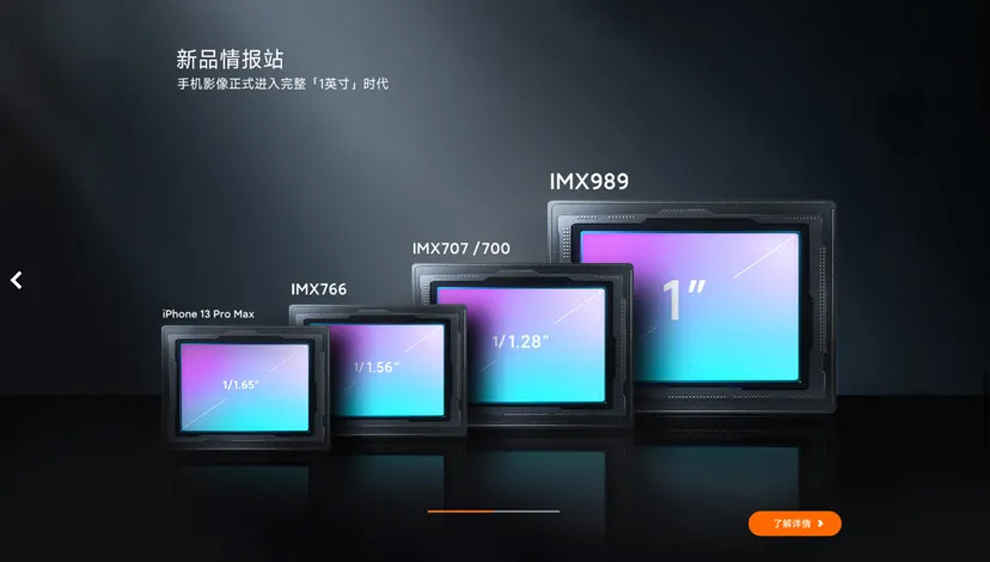

It shouldn’t come off as a surprise that specifications can often be misrepresented and misunderstood. The intention isn’t always to mislead customers but sometimes the truth gets muddled up when overzealous marketing teams try to oversimply technical details.
More often than not, this doesn’t result in consumers losing out on much. At the same time, if you are an enthusiast that doesn’t mind sifting through technical details and wants to understand your phones better – here are a few interesting facts that we are sure you will find exciting!
The bigger the camera sensor, the more light it can gather – and that indeed helps improve the quality of images and videos you capture. However, as weird as it may sound, you must know that sensor size doesn’t denote its actual size.


For instance, contrary to what is shown in the image above, the 1-inch sensors that have surged in popularity on drones and smartphones don’t have any dimension – length, breadth, depth or the diagonal of the surface – that measures 1-inch. The actual dimensions of Sony 1-inch sensor used on the Xperia Pro-1 measure 13.3 mm x 8.8 mm which is nowhere near the 25.4 mm or one-inch mark.
The thing is that it’s conventional to denote sensor size in terms of vacuum tube sensors that were earlier used in cameras and are now obsolete. To calculate sensor size, the diagonal measurement of the sensor surface area is multiplied by 3/2. This results in all sorts of odd sizes like 1/ 2.5-inches and 1/ 3.3-inches which aren’t actually true.
This is why Sony calls its sensor a 1-type sensor and not a 1-inch sensor. Smartphone OEMs, however, are not always as forthright.
For actual zoom, you will need the lens on the camera sensor to move back and forth. Some smartphones did experiment with the concept but it turned out that consumers didn’t crave additional zoom at the expense of pocketable design.
Modern phones use an optical trick for magnification. Your phone switches to a different sensor with a telephoto lens when you zoom in. The catch is that the underlying sensor beneath the telephoto lens is not the same sensor as the one on the primary camera. It’s often a smaller sensor.
When you put a large focal length lens on a smaller sensor, the image appears zoomed in because the smaller sensor uses less of the lens. The same 26mm lens on the primary camera can produce a zoom similar to a 39mm lens on a sensor half the size (1.5x crop factor).
So basically, what you get with a 2X zoom camera is equivalent to 2x zoom. The focal length of the smaller telephoto camera isn’t actually 2x the focal length of the primary sensor. Also, the optical zoom available works only at one specific focal length. For instance, if your phone has 3x optical zoom, the zoom between 1x to 3x (1.5x, 2x, 2.5x, etc. ) will all be digital zoom.
This optical trick lets manufacturers market higher optical zoom by reducing the sensor size of the telephoto camera at the expense of quality. In fact, our phones use this trick on all sensors. If the primary camera advertises a 26mm lens, then it probably includes a 4.5mm lens on top of a tiny sensor and is actually 26mm equivalent.
Also Read: 8 Best Periscope Telephoto Camera Phones for optical zoom in 2024
The actual resolution or sharpness of your AMOLED display might not be what is advertised. Almost all AMOLED displays on phones use a pentile pixel arrangement. What this means is that these displays have double green pixels than blue or red pixels and thus the effective resolution (Red, Green, Blue subpixel combos) is lesser than advertised. The red, green and blue subpixels are shared between pixels. No pixel has all three and every alternate pixel is missing a red or a blue.
Diamond Pentile sub-pixel layout of iPhone 13 Pro| Source: Display Mate
This is also why 2K AMOLED displays on Samsung phones in the past weren’t significantly sharper than 1080P AMOLED or IPS LCD displays. Not just Samsung and other Android phones but also Apple iPhones use Pentile OLED displays.
The pentile arrangement is popular because it helps increase the lifespan of the OLEDs and also helps OEMs advertise high resolution. Sure, there are artefacts because pixels are arranged in a criss-cross manner, but their impact is drastically reduced at high resolutions.
However, We do have a few RGB OLED displays on mobile devices like the one used on the Nintendo Switch OLED. Even Apple Watch models have a true RGB pixel matrix because when you need to represent physical objects like the moving hands of an analogue watch on a digital watch display, artefacts like aliasing are not pardonable.
Also Read: RGB to PHOLED to Tandem OLED: 8 Different Types of OLED Display Technologies You Should Know About
Every year flagship SoCs keep switching to smaller process nodes or technology nodes denoted by a nanometer number – 7nm, 5nm, 3nm, etc. This number, however, lost its relevance several years ago and doesn’t mean anything as of today. There is no dimension that actually measures 7 nanometers on a chipset that is based on a 7nm process.
In the past, this number used to refer to the actual and effective gate length of the transistors in the chip and later to the M1 half pitch (or half the distance between metal 1 lines on a chip), but as of today it has lost its meaning and is more of a marketing term.
The smaller the technology node, the smaller and more densely packed the transistors, which often results in better power efficiency. Just don’t expect your transistors to shrink proportionally to the nanometer marker.
This doesn’t pose much practical inconvenience, but yes, VRR or variable refresh rate on phones is not as seamless as on monitors, TVs and PCs. Depending on the content being rendered, the displays on our phones essentially switch between a set of discrete available refresh rate options like 48 Hz, 60Hz, 90Hz and 120Hz. For instance, most phones can run at 48Hz or 60Hz but not at 53Hz or any in-between refresh rate.
Phones with faster LTPO displays have subsets within the set and thus can quickly switch between more levels. This helps conserve battery as the phone can switch to lower frame rates while displaying static content.
With time as new display driver ICs evolve, we expect all phones to support seamless switching to any possible refresh rate between, say, 1Hz and 120Hz thus improving battery mileage.